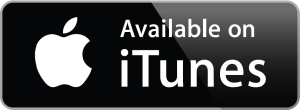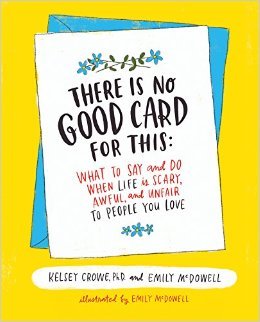Hannah Braime's Blog, page 14
February 5, 2017
How to Cultivate Ninja Active Listening Skills
Active listening skills are invaluable for any relationship. Being able to truly listen to what someone is saying—and show them we’re listening—is a gateway to deeper connection and more intimacy. As humans, we all have a desire to be seen, to be heard and to be understood. Developing our active listening skills is one way we can help the people we care about meet these needs. Knowing we’ve shown up and fully engaged in a conversation also comes with its own sense of fulfilment and reward.
Although my active listening skills are not perfect, it’s something I consciously work on and use daily in my work (especially coaching) and personal life. I believe the world would be a better place if we could each take time to listen just a little longer and a little deeper. In this post, I want to share a few skills I’ve found useful for my active listening practice. I hope they’re useful for you too:
Work on the three levels of active listening
These are: what’s being said, body language and tone, and what’s not being said or the subtext. The first two levels are relatively simple, the third requires more practice. To listen between the words, you need to develop your intuition (or in this case, nin-tuition ;).
Actually listen (and show you’re listening)…
This goes without saying, but if we want to cultivate active ninja listening skills, that involves actually listening to what the other person is saying. It doesn’t involve thinking about what we will have for dinner, that conversation we had with our problem neighbour last week, wondering if the dog is OK at home alone, or any of the other thousands of thoughts that cross our minds each day. Active listening is almost like meditation. These thoughts will come up. Instead of getting caught up in them, it’s our job to brush them to one side and refocus on the conversation in front of us.
… But don’t try so hard you end up disrupting the flow of the conversation
With in-person conversations, best way to show we’re listening is through body language, rather than verbal interjection. That means eye contact, stillness, even leaning in slightly (without cramping the other person’s personal space).
While vocalisations (“mhmm” etc.) can be a useful way to show you’re listening, too many of these disrupt the flow of the conversation and become irritating. When we try too hard to show we’re listening, we end up making the conversation about us, even if the other person is doing most of the talking. Which brings us to the next point…
Practice shelving self-conscious thoughts
One of the biggest barriers to active listening is getting caught up in what we’re going to say next or wondering what the other person thinks of us. If we’re focusing on these thoughts, we’re not truly listening to what the other person is saying. Self-consciousness is natural, especially if you’re new to active listening, but practice shelving these thoughts and refocusing on the conversation as soon as you notice distraction creeping in.
Be mindful
To listen, it’s important that we can separate out our own feelings and judgements from those of the person in front of us. This is something that’s easier said than done. It requires self-awareness and a lot practice, but it starts with being able to empathise with the other person’s position and see the world through their eyes—even for a few minutes.
Practice congruence and kindness
Cultivating strong active listening skills doesn’t mean “agreeing with everything someone says and keeping quiet when we think otherwise.” Neither, though, is it radical honesty. It does mean pausing before we speak and considering the impact of our words before we deliver them.
If someone is telling us about a near-miss car accident that left them shaken and we respond with “At least no one was hurt” we might mean this from a well-intentioned, comforting place, but they might receive it as dismissal. We can’t control (nor are we responsible for) how people receive our words. But it’s still important to reflect on the impact of how we say what we want to say before we go ahead and say it.
Which one of these active listening skills are you going to work on next time you’re in the right situation? Leave a comment and share your thoughts.
Further reading: The art of the meaningful apology & why we jump to conclusions (& how to stop)
The post How to Cultivate Ninja Active Listening Skills appeared first on Becoming Who You Are.









February 3, 2017
Support Becoming Who You Are on Patreon for Special Perks and Rewards
Becoming Who You Are is on Patreon!
By pledging just $5 a month, you will be making a huge difference to this website. Your pledge will help me keep creating useful content, free tools and resources. As a thank you, I’m offering some great rewards and perks for patrons, details of which you can find on the Patreon page here.
If you’re not familiar with Patreon, it’s like an ongoing Kickstarter that allows people to support their favourite creators through small monthly donations (called “pledges”) in return for special rewards. You have total control over how much you donate and it’s a way to make a tangible difference. If you have gained value from Becoming Who You Are and find the content and tools here useful, it’s an opportunity to show your support in a sustainable way.
By becoming a BWYA supporter, you have the chance to get:
Ebook and audiobook copies of The Ultimate Guide to Journaling and From Coping to Thriving: How to Turn Self-Care into a Way of Life (plus new books as I release them): value $33
All courses currently available through Becoming Who You Are (plus new ones as I create them), including 4 Weeks of Self-Knowledge, Be Your Own Hero and How to Start Journaling for Personal Growth: value $105
Special access to the Patreon supporters-only community where I welcome your feedback, suggestions and topic requests
Your name featured on a special supporters page with a link to your website and a virtual high-five
The feel-good factor associated with supporting Becoming Who You Are :)
Your support makes a difference and means a lot to me, thank you!
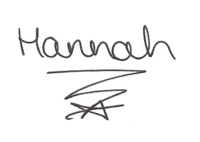
P.S. As a recap: Every dollar counts. You can choose your own level of support and you will make a difference to the future of Becoming Who You Are. Find out more and make your pledge here.
The post Support Becoming Who You Are on Patreon for Special Perks and Rewards appeared first on Becoming Who You Are.









February 1, 2017
#107: Just One Thing
In today’s episode, I want to share another simple but effective coaching tool with you. I call this “Just One Thing.” It’s a set of two questions we can use to get clarity and direction with our big goals and projects or when we’re looking to improve an area of our lives in general. These questions are useful because they ask us to consider what we need to stop doing, as well as what we need to start. They are also about keeping it simple and doing just one thing, rather than making changes across the board and ending up overwhelmed.
Enjoy!
Useful Links
The Ultimate Guide to Journaling
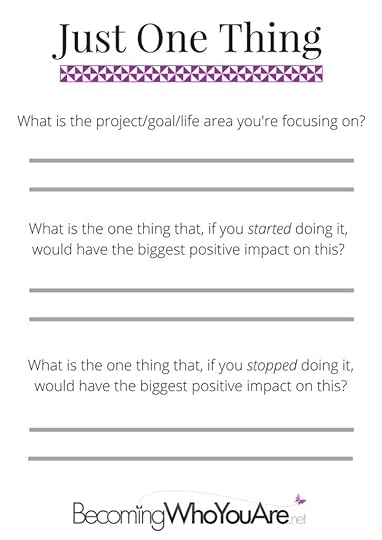
Say Hello
Hannah
Pinterest: pinterest.com/hannahbraime
Facebook: facebook.com/becomingwhoyouare
Website: becomingwhoyouare.net
Get a Free Audiobook from Audible
This podcast is brought to you by Audible.com. If you enjoy Becoming Who You Are, you can support the show by registering for a free 30-day trial using the link below. As part of your trial, you’ll get a free audiobook and can cancel any time.
Subscribe to the Podcast
Intro and outro: Stephanie Murphy
Image:
The post #107: Just One Thing appeared first on Becoming Who You Are.










January 29, 2017
Goodbye January (and Hello Patreon!)
Let’s say goodbye to the month that has been and get ready for the next with a roundup of 10 questions, recommended reading, and fun/useful links.
January has been my first month back working on Becoming Who You Are since my daughter was born last year. Like all big transitions, her arrival has had a (positive) impact on every aspect of my life, including this site. After being in a baby bubble for the last few months, it’s been invigorating to start easing back into planning and writing again, excited by the possibilities that lie ahead. I’m back at work on my upcoming book about self-kindness, cooking up content I think you’re going to love, and can’t wait to share all of this with you soon!
On Friday, I’ll be launching a Patreon for Becoming Who You Are. If you’re not already familiar with Patreon, it’s like an ongoing Kickstarter: a way for you to support Becoming Who You Are from just $1 per month and get some super duper perks and rewards as a thank you. I’ll be sharing more later this week. In the meantime, let’s wrap up this month!
10 Questions for you
January:
1. What went well?
2. What was challenging?
3. What lessons did you learn this month?
4. What surprised you this month?
5. Is there anything left over from this month you’d benefit from making peace with?
February:
6. What qualities are you committed to embodying in February?
7. what is one thing you avoided or ignored or took a backseat in January that you’re going to face head on this month?
8. What one thing can you do that will leave you feeling proud at the end of the month?
9. How do you want to feel this month?
10. What can you do to generate those feelings?
Articles of the month
The Most Important Question of Your Life
The Truth About Work Life Balance and How to Get It
Taming the Mammoth: Why You Should Stop Caring What Other People Think
Keep Going, You’re Doing Great: The 7 Paradoxes of Personal Growth
How Would the Ancient Stoics Have Dealt with Hate Speech?
Quote of the Month
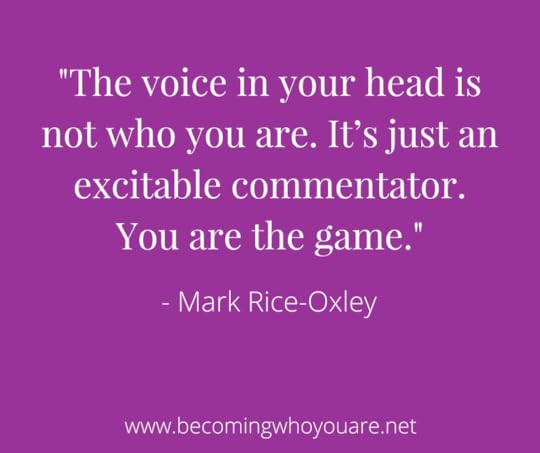
(From this article)
Book of the Month
There is No Good Card for This: What to Say and Do When Life is Scary, Awful and Unfair to People You Love is a much-needed guide to dealing with challenging life stuff in a compassionate and constructive way. If—like me—you often feel like you struggle to know what to say in response to other people’s bad news and end up either saying nothing at all (and feeling awful about it) or doing/saying something that leaves you cringing later (did that sound condescending and trite? Did they take it the way I meant it?) this book is for you. Not only does it contain useful exercises for working through our own psychological blocks to vulnerability and fear of saying the wrong thing, the subsequent chapters are a useful guide to supporting people through a myriad of challenging situations that will touch most of us at one point or another.
Useful tool of the month
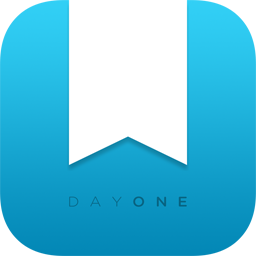 I’ve been using Day One daily this month to keep a “three things” gratitude journal and make notes about things that have happened each day (with a fast-growing baby, it’s a lovely way of capturing moments and memories that would otherwise be forgotten). I love it!
I’ve been using Day One daily this month to keep a “three things” gratitude journal and make notes about things that have happened each day (with a fast-growing baby, it’s a lovely way of capturing moments and memories that would otherwise be forgotten). I love it!
You can create multiple journals, add images and metadata (like a map of your location and weather) to each entry, and it’s easy to back everything up to the cloud so you won’t lose your data. The app has lots of other features too, it’s simple to use and beautifully designed.
In case you missed it…
Want to read more this year? Here’s a reading challenge to inspire you
My favourite books on life, work and growth from 2016
6 things I’m doing instead of new year’s resolutions
How to cultivate a healthy relationship with anger
Podcast #106: A review of ‘Guilt, Shame and Anxiety: Understanding and Overcoming Negative Legacy Emotions’ by Peter Breggin
How to ask for something (in a way that leaves people wanting to say yes)
Have a great February!
Image: Abigail Keenan
The post Goodbye January (and Hello Patreon!) appeared first on Becoming Who You Are.









January 22, 2017
How to Ask for Something (in a Way That Leaves People Wanting to Say Yes)
Before we get to this week’s post: Do you ever wish you could do more with your life, but held yourself back because you’re afraid of rejection? Check out The NO Game by my friend Jacob Sokol of Sensophy. The goal of the game is simple… collect ‘no’s by asking for things you’d like. Just imagine what’s possible if you weren’t afraid of getting a ‘no.’ You could expand your assumptions about what you think is possible in your life, develop the skill of asking for what you really really want, overcome your fears of rejection and develop more courage. There’s also a supportive FB group, so once you get a ‘no,’ you can celebrate with other participants. The challenge is completely free and runs until the end of January. You can join in anytime! Check it out here.
I don’t always find it easy to know how to ask for something. As a staunch I’ll-do-this-myself-come-hell-or-high-water kind of person, the art of the ask has been a steep learning curve personally and professionally. As part of that learning curve, I’ve realised that part of living a whole-hearted and connected life means acknowledging interdependence with my fellow humans. This involves asking for things and making requests of people.
Over the last few years (and especially running this website), I’ve had to ask for a lot. Doing this has helped me move from agonising over each individual ask, to experimenting and feeling a lot more comfortable making requests. I’ve also been on the receiving end of plenty of asks. Seeing the both sides of this process has taught me a lot about how (and how not to) go about it.
Here are a few things I’ve learned along the way about how to ask for something in a way that not only leaves us feeling good about the request, but also leaves other people wanting to say yes:
1. Ask with empathy
Empathy is about considering the person’s position before making the ask and the kind of relationship we already have with them. Are they busy? Acknowledge that. Have they offered to help or already helped us in some way? Acknowledge that too.
It’s also about thinking over our ask and considering how it might feel to be the other person receiving it. When we feel self-conscious about making an ask, it’s easy to slip into focusing on our needs alone and make it all about us. The best asks are win-win asks. While it’s important to ask with humility (more on that below), it’s helpful to show the other person we’ve thought about them and how we could reciprocate too.
2. Ask from a place of enough-ness
This is a tricky piece, but it’s so important. What often makes asks feel hard is the idea that we need the other person to say “yes.” Whether we’re talking “Do you want to go out on a date next Friday?” or “I’d like to ask for a raise,” desperation is a real turnoff.
Asks are best made from a place of enthusiasm and openness to whatever unfolds. No matter how high-stakes the ask might feel to us, it’s important to remember that we don’t need the person to say yes. There will always be another way to move forward. In his book Getting to Yes, William Ury talks about creating a BATNA, which stands for “best alternative to negotiated agreement.”
This is something I make a regular practice of using now, especially when I feel nervous about making an ask. For collaborative work projects, I usually ask more people than I need because I assume some people will say no (for The Entrepreneur’s Inner World, I approached over 50 people to take part, and interviewed the 24 people who said yes). For personal asks, I think in advance about what my plan B will be if the person declines.
This isn’t the same as assuming the worst. In fact, I’m more optimistic going into the ask because I know if I get a “no,” everything will be just fine.
3. Ask with humility
Another way asking from a place of scarcity can manifest is in a lack of humility. A request is not a demand. Asking someone for something from a place of entitlement or superiority is not a good start and can hinder our chances of getting the yes we might have otherwise received.
4. Be reciprocal…
This isn’t applicable to all asks, but it harks back to point no. 1 about empathy.
If we’re asking for someone’s time and energy, what can we give them in return? This doesn’t have to involve payment. It could be an offer to help them move house next Thursday or to take them out to dinner to say thank you. It could be a shout-out on social media, spreading the word about their work, or leaving a glowing review or testimonial. Sometimes, it’s simply taking the time to say “thank you.” The level of reciprocity will depend on the size and the context of the ask, but it’s always useful to think about what we can offer the other person.
5. … And then follow through
As great as it feels to be on the receiving end of a reciprocal ask, that great feeling doesn’t last long if the other person doesn’t follow through. Offering reciprocity then not holding up your end of the exchange is bad juju. Not only does it damage the relationship (and likely to lead to “no”s in the future), it also undermines your relationship with yourself, your self-trust and sense of integrity.
4. Remember a “no” is rarely personal
When you ask for something you’re meeting your needs. When someone says no, they’re meeting theirs.
It’s rarely personal. More often than not, it’s just about needs. Remembering this takes the emotion out of hearing no and makes it easier to make requests that will meet our needs in the future.
Do you have any suggestions for how to ask for something in way that leaves other people wanting to say yes? Leave a comment and share your thoughts.
Further reading: navigating the minefield of advice & boundaries & how to ask for what you want without feeling awkward
The post How to Ask for Something (in a Way That Leaves People Wanting to Say Yes) appeared first on Becoming Who You Are.









January 8, 2017
How to Cultivate a Healthy Relationship with Anger
Do you have a healthy relationship with anger? Like other so-called negative feelings, it’s one of the more stigmatised emotions we experience and, if you’re like most people (including me), your relationship with anger might best be described as “it’s complicated”… So let’s start by acknowledging we all experience this emotion from time to time and talk about how we can cultivate a healthy relationship with anger.
Anger is a healthy response to having boundaries crossed.
It’s not the same as rage, aggression or acting out. It’s possible to be angry with someone and still have a reasonable conversation with them sans raised voices or venting.
The problem is that most of us don’t have a template for this healthy version of anger. Depending on how you saw other people express anger and what you were told and taught about your own anger, you might have learned that anger isn’t acceptable or if you express anger, people will reject you. You might be someone who says “I don’t get angry,” even feeling a little pride you don’t experience such a base emotion.
But whatever your relationship with anger, it exists. If we refuse to accept it or provide a healthy outlet for it, it becomes channeled into something else beyond our control. Sometimes this might be explosive: where we bottle things until we can’t hold back any longer, or until something seemingly innocuous makes us hit the roof (what Brené Brown calls “chandeliering”). Sometimes unacknowledged anger can manifest as anxiety or depression. Sometimes bottled anger can manifest under the guise of “being honest” and allowing a tirade of pent-up feeling and frustration to pour out in someone’s direction.
Many of us are raised to believe anger is “bad.” But anger isn’t the problem, behaviour is. It’s how we deal with our anger that makes or breaks not only our experience of this emotion, but other people’s experience of us too.
So what does healthy anger look like? Healthy anger is noticed, acknowledged, felt and accepted for what it is. It’s greeted with a questioning process: what is really behind this? Often anger masks other more vulnerable feelings like hurt and shame. As Peter Breggin writes in his book Guilt, Shame and Anxiety, healthy anger always walks hand in hand with vulnerability:
“When we express anger without additionally expressing the underlying vulnerability, this will only build barriers. It is one thing to tell friends or loved ones that we feel angry with them; it is another to express anger toward them in a way that is frightening or threatening. We will accomplish more if we express anger in a way that emphasizes that we feel hurt. That can invite the other person to listen to us and to remedy the situation.”
He points out that anger is never a solo emotion: something else always exists below it. Usually this is a sense of vulnerability or feeling threatened. Sometimes it’s also what he describes as “negative legacy emotions” like guilt, shame and anxiety (you can read more about these here). As part of exploring my own relationship with anger, I noticed I often resorted to sarcasm or barbed comments rather than expressing anger (and the underlying feelings) openly. Doing this not only felt safer but also gave me a sense of power or one-upmanship over the other person when I felt at my most vulnerable.
When we have a healthy relationship with anger, we acknowledge these underlying emotions and experiences just as much as we acknowledge the anger itself.
This is easier said than done: in the moment, our anger usually feels justified (and sometimes it is). But sometimes it’s not. Sometimes someone might say or do something innocent, but their behaviour pushes our internal shame buttons or stirs up past experiences. They become the immediate focus of our anger, even though we’re responding to wounds from years, if not decades, ago.
We need to cultivate self-awareness around our anger and detach from these internal justifications to see the situation in its true light. Once we can do this, identify the true source of our anger, and name the feelings underneath, we can then decide how we want to show up in the interaction. We can by-pass our knee-jerk response, skip lashing out and respond with a rational, loving approach towards ourselves and others.
How to cultivate a healthy relationship with anger
1. Start by recognising its masks.
Anger doesn’t always manifest as anger. Sometimes it’s resentment, sometimes it’s anxiety, sometimes it’s depression. These masks often develop because they feel “safer” than anger.
2. Explore the messages you received around anger.
Good girls don’t get angry. Anger equals aggressiveness. When you express anger, people will leave you. Your anger is unjustified and unreasonable. If we’ve internalised these kinds of messages, then it’s not surprising we’re trying to channel our anger in to something that feels more acceptable. Recognise that anger is a valid and acceptable emotion, just as much as joy, sadness, grief, or anything else on the emotional spectrum.
3. Redefine your relationship with anger:
Remember anger isn’t the problem, behaviour is. Anger might not feel comfortable, but it’s a rational response to feeling wronged, and can lead to constructive outcomes when processed and responded to appropriately.
Remember anger isn’t the same as venting. Studies have shown that punching a pillow or venting only makes us angrier, it doesn’t help us process the anger.
Look for the feelings underneath the anger: usually these are a combination of hurt, shame, guilt, anxiety or similar. These are the root of our anger and we need to acknowledge them to relate to and express our anger in a healthy way.
4. Practice conscious expression of anger.
This might look like noticing you feel angry and taking time out to process your feelings, get to the root of your anger, and decide how you want to respond. Even if someone has genuinely wronged us, we will only raise more barriers in that relationship if we express our anger without expressing the emotions that lie beneath it. When we can share the spectrum of our experiences, however, we give the other person a chance to empathise with us and make amends.
Have you worked on cultivating a healthy relationship with anger? What has helped you do this in your life? Leave a comment and share your thoughts.
Further reading: The hidden dangers in positive thinking & how to stay optimistic when bad things happen
The post How to Cultivate a Healthy Relationship with Anger appeared first on Becoming Who You Are.









January 4, 2017
#106: A Review of ‘Guilt, Shame and Anxiety: Understanding and Overcoming Negative Legacy Emotions’ by Peter Breggin
This episode of the podcast is a conversation I had with Jake for the Psychology Book Club about the book Guilt, Shame and Anxiety: Understanding and Overcoming Negative Emotions by Peter Breggin. I’ve written about this book on Becoming Who You Are previously here, and you can enter your email at below to get a summary of 10 key ideas from the book.
Useful Links
The Psychology Book Club
Guilt, Shame and Anxiety: Understanding and Overcoming Negative Emotions by Peter Breggin
Say Hello
Jake
Facebook: facebook.com/thevoluntarylife
Twitter: @jakedesyllas
Website: thevoluntarylife.com
Hannah
Pinterest: pinterest.com/hannahbraime
Facebook: facebook.com/becomingwhoyouare
Website: becomingwhoyouare.net
Get a Free Audiobook from Audible
This podcast is brought to you by Audible.com. If you enjoy Becoming Who You Are, you can support the show by registering for a free 30-day trial using the link below. As part of your trial, you’ll get a free audiobook and can cancel any time.
Subscribe to the Podcast
Intro and outro: Stephanie Murphy
Image: Agnieszka P via Unsplash
The post #106: A Review of ‘Guilt, Shame and Anxiety: Understanding and Overcoming Negative Legacy Emotions’ by Peter Breggin appeared first on Becoming Who You Are.










6 Things I’m Doing Instead of New Year’s Resolutions
I used to set New Year’s resolutions every year without fail. And, every year without fail, I’d forget all about them by February, maybe March. Despite my track record (and the fact it never occurred to me to change my approach), I’d start off each year sure this was the year. I would arrive at 1st January bright-eyed, bushy-tailed and optimistic that certain aspects of my life were about to change for the better.
Like younger me, you’ve probably experienced New Year’s resolutions don’t usually work in the way we hope they will. There are good reasons for this, so rather than try to stick to a tradition that doesn’t serve me, the last few years I’ve experimented with various replacements. This week, I want to share what I’m doing this year instead of going through the self-defeating cycle of making and breaking promises to myself.
1. Experimenting with 30-day challenges
I started doing this in 2016 with a 30-day drawing, illustrating and lettering challenge. I found that, while I tend to overestimate what I can achieve in a day, I also tend to underestimate how much I can achieve (and improve) in a month.
This year, I’ve made a list of new 30-day challenges I’d like to try. These range from yoga, to writing poetry, to doing a Whole30 and more. 30 days isn’t so long the commitment becomes unsustainable but it’s long enough to make a difference. I won’t get through my whole challenge list this year, but I’m looking forward to gently stretching myself with a select few.
2. Writing a letter to my future self
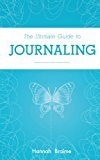
-26%
The Ultimate Guide to Journaling
Price: $5.57
Was: $7.49
‹
›
This is one of my favourite journaling exercises (and something I write more about in The Ultimate Guide to Journaling). There are a couple of ways you can do this. Plain old pen and paper will suffice but you can also use technology to help. Futureme.org allows you to send emails to yourself in the future, or you can use a simple programme like Boomerang for Gmail to bounce the message back to your inbox on a particular date.
Whatever method you use, I find it useful to write my future self a letter with my hopes and dreams for the year. Not only does this help me clarify what I’d like to do and experience during the next 365 days, but it’s illuminating to look back on the letter at the end of the year and see how the year in my imagination compared with the year that actually was.
You can learn more about this journaling technique, along with 30+ other techniques and prompts in The Ultimate Guide to Journaling.
3. Revisiting the Wheel of Life
This is an eye-opening exercise to do at the beginning of the year. Rather than plucking goals or resolutions out of thin air, it gives me a birds-eye view of how each area of my life is going at this moment in time. This helps me identify which areas are going well, which need a little more TLC, and what needs to happen to step closer to my ideal vision for that part of my life.
I’ve created a workbook based on this exercise called Say Hello to Your Future Self, which is available for free in the Becoming Who You Are Library. You can get it here (post continues below):
Get clarity on your next big steps
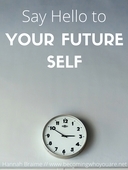
Enter your email to download your free workbook and get clarity on your next big steps in life.
You'll also get access to all the other workbooks, video classes and MP3s in the Becoming Who You Are Library, plus weekly updates on living with greater courage, compassion and authenticity.
Success! Please check your inbox and click the link in the confirmation email to download your workbook.
There was an error submitting your subscription. Please try again.
First Name Email Address We use this field to detect spam bots. If you fill this in, you will be marked as a spammer. I'd like to receive the free email course. Download Powered by ConvertKit /* Layout */ .ck_form { /* divider image */ background: #fff url(data:image/gif;base64,R0lGODlhAQADAIABAMzMzP///yH/C1hNUCBEYXRhWE1QPD94cGFja2V0IGJlZ2luPSLvu78iIGlkPSJXNU0wTXBDZWhpSHpyZVN6TlRjemtjOWQiPz4gPHg6eG1wbWV0YSB4bWxuczp4PSJhZG9iZTpuczptZXRhLyIgeDp4bXB0az0iQWRvYmUgWE1QIENvcmUgNS41LWMwMTQgNzkuMTUxNDgxLCAyMDEzLzAzLzEzLTEyOjA5OjE1ICAgICAgICAiPiA8cmRmOlJERiB4bWxuczpyZGY9Imh0dHA6Ly93d3cudzMub3JnLzE5OTkvMDIvMjItcmRmLXN5bnRheC1ucyMiPiA8cmRmOkRlc2NyaXB0aW9uIHJkZjphYm91dD0iIiB4bWxuczp4bXA9Imh0dHA6Ly9ucy5hZG9iZS5jb20veGFwLzEuMC8iIHhtbG5zOnhtcE1NPSJodHRwOi8vbnMuYWRvYmUuY29tL3hhcC8xLjAvbW0vIiB4bWxuczpzdFJlZj0iaHR0cDovL25zLmFkb2JlLmNvbS94YXAvMS4wL3NUeXBlL1Jlc291cmNlUmVmIyIgeG1wOkNyZWF0b3JUb29sPSJBZG9iZSBQaG90b3Nob3AgQ0MgKE1hY2ludG9zaCkiIHhtcE1NOkluc3RhbmNlSUQ9InhtcC5paWQ6MUQ5NjM5RjgxQUVEMTFFNEJBQTdGNTQwMjc5MTZDOTciIHhtcE1NOkRvY3VtZW50SUQ9InhtcC5kaWQ6MUQ5NjM5RjkxQUVEMTFFNEJBQTdGNTQwMjc5MTZDOTciPiA8eG1wTU06RGVyaXZlZEZyb20gc3RSZWY6aW5zdGFuY2VJRD0ieG1wLmlpZDoxRDk2MzlGNjFBRUQxMUU0QkFBN0Y1NDAyNzkxNkM5NyIgc3RSZWY6ZG9jdW1lbnRJRD0ieG1wLmRpZDoxRDk2MzlGNzFBRUQxMUU0QkFBN0Y1NDAyNzkxNkM5NyIvPiA8L3JkZjpEZXNjcmlwdGlvbj4gPC9yZGY6UkRGPiA8L3g6eG1wbWV0YT4gPD94cGFja2V0IGVuZD0iciI/PgH//v38+/r5+Pf29fTz8vHw7+7t7Ovq6ejn5uXk4+Lh4N/e3dzb2tnY19bV1NPS0dDPzs3My8rJyMfGxcTDwsHAv769vLu6ubi3trW0s7KxsK+urayrqqmop6alpKOioaCfnp2cm5qZmJeWlZSTkpGQj46NjIuKiYiHhoWEg4KBgH9+fXx7enl4d3Z1dHNycXBvbm1sa2ppaGdmZWRjYmFgX15dXFtaWVhXVlVUU1JRUE9OTUxLSklIR0ZFRENCQUA/Pj08Ozo5ODc2NTQzMjEwLy4tLCsqKSgnJiUkIyIhIB8eHRwbGhkYFxYVFBMSERAPDg0MCwoJCAcGBQQDAgEAACH5BAEAAAEALAAAAAABAAMAAAICRFIAOw==) repeat-y center top; font-family: "Helvetica Neue", Helvetica, Arial, Verdana, sans-serif; line-height: 1.5em; overflow: hidden; color: #000000; font-size: 16px; border-top: solid 20px #3071b0; border-top-color: #9a349a; border-bottom: solid 10px #3d3d3d; border-bottom-color: #5c1f5c; -webkit-box-shadow: 0px 0px 5px rgba(0,0,0,.3); -moz-box-shadow: 0px 0px 5px rgba(0,0,0,.3); box-shadow: 0px 0px 5px rgba(0,0,0,.3); clear: both; margin: 20px 0px; } .ck_form, .ck_form * { -webkit-box-sizing: border-box; -moz-box-sizing: border-box; box-sizing: border-box; } #ck_subscribe_form { clear: both; } /* Element Queries — uses JS */ .ck_form_content, .ck_form_fields { width: 50%; float: left; padding: 5%; } .ck_form.ck_horizontal { } .ck_form_content { border-bottom: none; } .ck_form.ck_vertical { background: #fff; } .ck_vertical .ck_form_content, .ck_vertical .ck_form_fields { padding: 10%; width: 100%; float: none; } .ck_vertical .ck_form_content { border-bottom: 1px dotted #aaa; overflow: hidden; } /* Trigger the vertical layout with media queries as well */ @media all and (max-width: 499px) { .ck_form { background: #fff; } .ck_form_content, .ck_form_fields { padding: 10%; width: 100%; float: none; } .ck_form_content { border-bottom: 1px dotted #aaa; } } /* Content */ .ck_form_content h3 { margin: 0px 0px 15px; font-size: 24px; padding: 0px; } .ck_form_content p { font-size: 14px; } .ck_image { float: left; margin-right: 5px; } /* Form fields */ .ck_errorArea { display: none; } #ck_success_msg { padding: 10px 10px 0px; border: solid 1px #ddd; background: #eee; } .ck_label { font-size: 14px; font-weight: bold; } .ck_form input[type="text"], .ck_form input[type="email"] { font-size: 14px; padding: 10px 8px; width: 100%; border: 1px solid #d6d6d6; /* stroke */ -moz-border-radius: 4px; -webkit-border-radius: 4px; border-radius: 4px; /* border radius */ background-color: #f8f7f7; /* layer fill content */ margin-bottom: 5px; height: auto; } .ck_form input[type="text"]:focus, .ck_form input[type="email"]:focus { outline: none; border-color: #aaa; } .ck_checkbox { padding: 10px 0px 10px 20px; display: block; clear: both; } .ck_checkbox input.optIn { margin-left: -20px; margin-top: 0; } .ck_form .ck_opt_in_prompt { margin-left: 4px; } .ck_form .ck_opt_in_prompt p { display: inline; } .ck_form .ck_subscribe_button { width: 100%; color: #fff; margin: 10px 0px 0px; padding: 10px 0px; font-size: 18px; background: #9a349a; -moz-border-radius: 4px; -webkit-border-radius: 4px; border-radius: 4px; /* border radius */ cursor: pointer; border: none; text-shadow: none; } .ck_form .ck_guarantee { color: #626262; font-size: 12px; text-align: center; padding: 5px 0px; display: block; } .ck_form .ck_powered_by { display: block; color: #aaa; } .ck_form .ck_powered_by:hover { display: block; color: #444; } .ck_converted_content { display: none; padding: 5%; background: #fff; }4. Focusing on how I want to feel and creating my to-do list from there
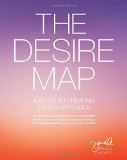
-43%
The Desire Map: A Guide to Creating Goals with Soul
Price: $12.58
Was: $22.00
‹
›
This concept comes from Danielle LaPorte, author of The Desire Map. The idea is simple, but quietly life-changing. Rather than setting goals based on what we want to achieve, start by identifying how we want to feel and work outwards from there.
This has two important results: if a particular goal doesn’t fit with a core desired feeling, we have permission to shelve it. Equally, we open ourselves up to new and previously unconsidered goals that could be far more fulfilling and life-enriching than we’d anticipated.
The core concept of The Desire Map is one of those lightbulb moments that has changed the way I approach goals in every area of my life. Find out more about the book by clicking the link to the left. Danielle also sells Desire Map journals, audios and other related resources on her website.
5. Revising my “when life works” list
This is one of my favourite coaching exercises, so I’m happy to see it’s also one of the most popular Becoming Who You Are Podcast episodes. A “when life works” list is a collection of activities and rituals that help us feel like the best version of ourselves. Each list is personal but, when I’ve done this exercise with coaching clients, common items include spending time in nature, journaling, and exercising.
As humans, we are always evolving and changing, so what keeps us afloat will evolve and change too. Like the Wheel of Life exercise, the beginning of the year is the perfect time to revisit and revise this list to give ourselves the best chance of thriving in the new year.
Find out more about creating your list and get a free worksheet to help here.
6. Remembering it’s all arbitrary anyway…
As much as I love the festive season, I also like to remind myself that the new year isn’t the be all and end all. In fact, it’s a made-up holiday dedicated to Janus, the god of gateways and new beginnings (before the month of January existed, new year was originally in March). This means if the first few days of this year (and your new year’s resolutions) haven’t been amazing so far, it doesn’t matter. You have permission to begin your new year whenever you please.
The reality of life is we don’t need to (and shouldn’t) wait for some arbitrary time—for January, for the first day of the month, for next week or even for tomorrow—to start something that really matters to us. It’s how we show up every day that counts.
What do you do instead of new year’s resolutions? Leave a comment and share your thoughts!
Image: Shelby Courtney
The post 6 Things I’m Doing Instead of New Year’s Resolutions appeared first on Becoming Who You Are.









January 2, 2017
My Favourite Books on Life, Work and Growth from 2016
Phew. Looking back at the tail end of it all, 2016 has clearly been 12 months of high highs and low lows. Whatever else is happening in the world, books have always been a way for me to retreat away from the world for a while. They feed my curiosity and creativity and, in the case of fiction, allow me to practice a little harmless escapism and try on someone else’s life for a few hours :) So today, I want to share a few of my favourite reads from 2016.
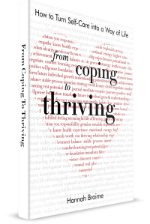 While we’re on the topic of books, From Coping to Thriving: How to Turn Self-Care Into a Way of Life is now out on audio! It’s narrated by the lovely Stephanie Murphy, who you will recognise from the intro to the Becoming Who You Are podcast and The Ultimate Guide to Journaling audiobook. Click here to get a 30-day trial of Audible.com and download From Coping to Thriving for free.
While we’re on the topic of books, From Coping to Thriving: How to Turn Self-Care Into a Way of Life is now out on audio! It’s narrated by the lovely Stephanie Murphy, who you will recognise from the intro to the Becoming Who You Are podcast and The Ultimate Guide to Journaling audiobook. Click here to get a 30-day trial of Audible.com and download From Coping to Thriving for free.
Here are my favourite reads from this year. I’d also love to hear yours so leave a comment and share them below!
Creativity and Work
The Crossroads of Should and Must by Elle Luna
Anything You Want by Derek Sivers
Pivot: The Only Move That Matters Is Your Next One by Jenny Blake
Writing Down the Bones by Natalie Goldberg
Thrive: The Third Metric to Redefining Success and Creating a Happier Life by Arianna Huffington
Psychology and Personal Growth
The Six Pillars of Self-Esteem by Nathaniel Branden
A Guide to the Good Life: The Ancient Art of Stoic Joy by William B. Irvine
Mindsight: Transform Your Brain With the New Science of Kindness by Daniel Siegel
Succeed: How to Reach Your Goals by Heidi Grant Halvorson
Guilt, Shame and Anxiety: Understanding and Overcoming Negative Emotions by Peter Breggin
Birth, babies and parenting
Bumpology: The Myth-Busting Pregnancy Books for Curious Parents to Be by Linda Geddes
The Fourth Trimester: Understanding, Protecting, and Nurturing an Infant Through the First Three Months by Susan Brinkley
The Homebirth Handbook by Anne Francis
How Not to F*** Them Up by Oliver James
Brain Rules for Baby by John Medina
Why Love Matters by Sue Gerhardt
Fiction
East of Eden by John Steinbeck
Case Histories by Kate Atkinson
Station Eleven by Emily St. John Mandel
A Man Called Ove by Frederik Backman
When God Was a Rabbit by Sarah Winman
Everything Else
The Demon-Haunted World – Carl Sagan
Nothing to Envy: The Ordinary Lives of People in North Korea by Barbara Demick
Do No Harm: Stories of Life, Death and Brain Surgery by Henry Marsh
What were your favourite books from 2016? Leave a comment and share your reading suggestions!
Further reading: If you’re looking to jazz up your reading in 2017, here’s a fun reading challenge I’m trying this year. Join me?
The post My Favourite Books on Life, Work and Growth from 2016 appeared first on Becoming Who You Are.









January 1, 2017
Want to Read More This Year? Here’s a Reading Challenge to Inspire You
Happy New Year, friends! As we embark on a new trip around the sun, I’m thinking about what I’d like to experience and learn this year. Among other things, this includes a friendly and fun reading challenge.
I don’t know about you, but I can sometimes get stuck in a reading rut. For a couple of years after leaving university, I only read psychology and self-help books and didn’t realise how much I was missing all the other genres I’d put aside in the meantime. My reading now is more balanced but I’m always looking to broaden my book-based horizons. This year, I’ve created a reading challenge to jazz up my book list.
The idea behind these challenges is to encourage myself to read books I might usually overlook or wouldn’t otherwise consider. If you’re not a huge fan of reading but would like to try to read more, creating a reading challenge is also a great way of gamifying this activity and making it more fun.
There are two versions of this challenge you can try depending on how ambitious you’re feeling. The first is a 26-book version, which evens out at a book once every two weeks. The second is the 56-book version, which is the equivalent of a book a week. I’m planning to start with the 26-book version and see how things go. Join me?
The 26-book 2017 reading challenge
A book you read in school
A book from your childhood
A book published over 100 years ago
A book published in the last year
A non-fiction book
A book written by a male author
A book written by a female author
A book by someone who isn’t a writer (think Paul Kalathani or Richard Branson)
A book that became/is becoming a film
A book published in the 20th Century
A book set in your hometown/region
A book with someone’s name in the title
A book with a number in the title
A book with a character with your first name
A book someone else recommended to you
A book with over 500 pages
A book you can finish in a day
A previously banned book
A book with a one-word title
A book translated from another language
A book that will improve a specific area of your life
A memoir or journal
A book written by someone younger than you
A book set somewhere you’ll be visiting this year
An award-winning book
A self-published book (may I suggest this one? :))
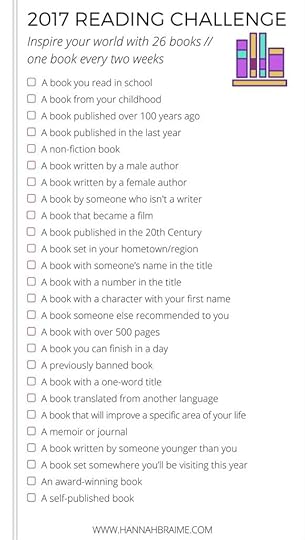
The 52-book 2017 reading challenge
A book you read in school
A book from your childhood
A book published over 100 years ago
A book published in the last year
A non-fiction book
A book written by a male author
A book written by a female author
A book by someone who isn’t a writer
A book that became/is becoming a film
A book published in the 20th Century
A book set in your hometown/region
A book with a name in the title
A book with a number in the title
A book based on a true story
A book someone else recommended
A book with over 500 pages
A book you can finish in a day
A previously banned book
A book with a one-word title
A book translated from another language
A personal growth book
A memoir or journal
A book by someone younger than you
A book set somewhere you’ll visit this year
An award-winning book
A book you were supposed to read in school but haven’t yet
A book with a character with your first name
A book with a place in the title
A book set in the future
A play
A scary book
A funny book
A book of short stories
A trilogy or series
A bestseller
A book you own but haven’t read yet
A book about philosophy
An epic poem
A Victorian novel
A book of poetry
A book with a colour in the title
A book with an appealing cover
A book about psychology
A book about science
A graphic novel
A self-published book
A book based on a true story
A famous author’s first novel
A book of non-fiction essays
A book by an author you haven’t read before
A book set in a country you’ve never been to
A book set in the place you live today
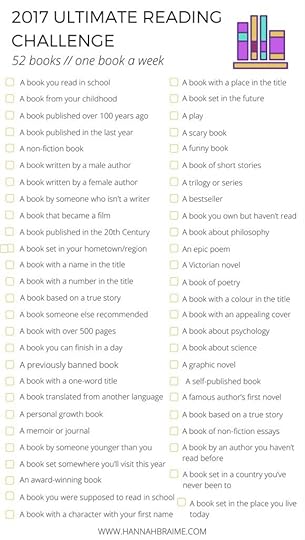
So what do you think? Are you planning to do a 2017 reading challenge? Leave a comment and let me know!
Further reading: 7 must-read books that will better your relationship & my favourite books on creativity and personal growth from 2015
The post Want to Read More This Year? Here’s a Reading Challenge to Inspire You appeared first on Becoming Who You Are.











